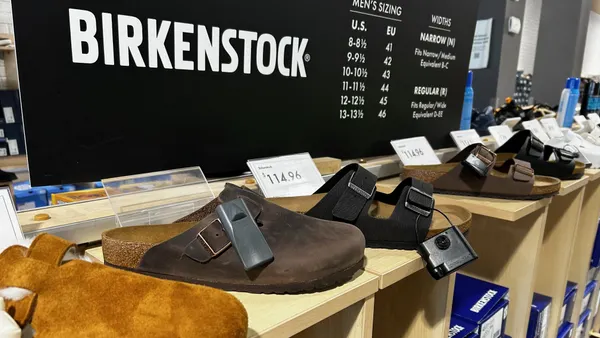Dive Brief:
- From Amazon’s Prime membership numbers to its entry into the grocery space to its retail "dominance," Moody’s analysts led by Charles O’Shea tackled some widespread assumptions about the e-commerce giant’s place in the world in a recent report emailed to Retail Dive. Amazon did not immediately respond to a request for comment.
- Analysts with the bond rating agency noted that, though Amazon dominates online sales, those sales account for just 10% of the industry as a whole. As for its recent acquisition of Whole Foods, the analysts wrote, "We believe it’s a big stretch to say — as many in the market have been doing — that Amazon will dominate food retail, and some have said this will happen within two years." They pointed out that Amazon, even now with Whole Foods in the fold, controls only a $20 billion piece of an $800 billion market for food sales in the U.S.
- O’Shea and his fellow analysts also called into question oft-cited estimates of Amazon’s Prime membership at 85 million, which they call "seriously overstated," "highly improbable" and made "in the absence of any real guidance from the company itself." Moody’s analysts, based on an evaluation of demographic data, think the figure for Prime members is closer to 50 million, well below Costco’s total of 86.7 million members.
Dive Insight:
For O’Shea and the Moody’s team, overstated assumptions about Amazon’s place in the retail universe is a bigger issue than just media and market hype. They note Amazon’s stock has been outperforming other retailers because of its "future growth story," even given "the superior real-time operating performance of Amazon's key retail competitors."
"The equity story on Amazon is interesting from my perspective," O’Shea said in an interview with Retail Dive. "The shareholders are agnostic about profitability, and that gives Amazon a huge leg up competitively. If I’m running a retailer and my shareholders don’t care if I make money or not, I can do a lot of things I couldn’t do if my shareholders cared if I made money."
The stock market’s recent fervor for Amazon and disdain for traditional retailers has altered the behavior of the latter group, and not always to their benefit. "The emphasis on stock performance is, in our view, forcing brick and mortar competitors toward managing more irrationally for short-term performance just when they're confronting secular change," the analysts wrote.
As an example, they point to Staples — a retailer with a strong e-commerce game and profitable corporate sales unit — selling itself to a private equity firm in what they call "an effort to enhance shareholder value." That move could add debt to Staples’ books and, under the most recent plan, would split the company apart.
Amazon, in Moody’s view, "is actually the weakest of the large retailers, excluding sales growth," based on traditional methods of evaluating publicly traded retailers, such as profitability and operating margin. And even Amazon’s sales growth metric is arguably only possible because "Amazon has been 'buying' sales for the past 15 years, considering profits have not been its primary focus — unlike other retailers," the analysts wrote.
Moody’s analysts also considered Amazon’s recent foray into online appliance sales, where the company has made little headway so far. In July, the e-commerce seller inked a deal with the ailing Sears to sell Kenmore appliances, some of which will connect with Amazon’s Alexa voice assistant. The announcement gave a boost to Sears’ stock — a rare event these days — and knocked billions in value off the stocks of major appliance retailers like Home Depot and Lowe’s. But Moody’s analysts consider the partnership a "a non-event" that "looks like any other third-party relationship."
"I cover Walmart and Target and Costco and Toys R Us and a litany of large retailers, and I’ve been doing it for almost 15 years here," O’Shea told Retail Dive, explaining why his team took on the issues in the report. "And what I’ve seen is, there’s a lot of speculation in the market and a lot of the speculation, and the things that get thrown out there by analysts who may or may not be defending a price target are things we felt we needed to look at."
He added, "I get calls from investors all the time saying, 'Gee I just saw Amazon had 85 million Prime members in the U.S.,' and I say, 'Where the hell did you see that?'"















